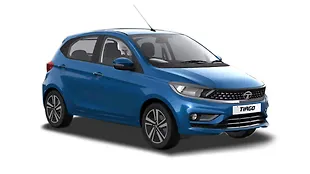Introduction

What is a drag Zen? We are certainly not speaking about a new Japanese animes or manga series here. For the Japanese, Zen emphasizes meditation and intuition on the journey of your quest of nirvana. For the materialists, Zen is the way of looking into everything you do and find better ways to do it. For the aam junta, Zen is the vibe you want to give off when the boss is reaming you down in front of the team or when your mom works herself up to a panic screaming mode. But for auto enthusiasts like us, Zen is a tool – the one that can take us further in our quest for the ultimate quarter-mile times.
The Zen we speak about is the Maruti Suzuki Zen, that puny compact hatch that assured us Indians that small cars can actually go beyond 100kmph and not just blow into pieces. Way back in the 90s, it was THE premium hatch and by early 2000s, the second most sold car in the country. How could it be that something so common and so inexpensive would go on to become the ideal tool to help us punch ten times over its weight (read horsepower).
The Zen as we know it here, is the Japanese Alto, a true JDM-spec car. When we speak about JDM cars, the Japanese domestic market cars, we know that there is something in them that make them one of the best tuner tools. The Hachi Roku (AE86), the Supra, the Skyline, they all can turn into tarmac scorchers with just a few tweaks. Back here in India it is the Zen. It weighs just 765kg, is low slung and is nimble. Remove the rear seats, trims and the other excesses and you will be staring at the low 700s. The 1.0-litre motor is old-school which means the robust block can be tinkered with a lot to find more horses from it. The Zen is like a tuner’s canvas – you can always add more colour to it!

Introduction
Stage 1
So how do you get your little Zen to drag race? First, you learn to drag race. For that you don’t need Vin Diesel horsepower packed under that hood. To learn the right technique, you need a robust engine, cheap tyres and a cheaper clutch. Holding to the right rpm and launching it with minimum wheel-spin, knowing when to shift in every gear and shifting it within a blink of an eye needs hours of practice to get to novice level.

As you get better with your timings, you can start boosting horsepower. First up are the Stage 1 mods, a cold-air intake, a free-flow exhaust, better plugs and a tricked ECU. The little 1.0-litre four cylinder engine will cough up at least 8-10bhp more than its standard 60bhp of power. You can get more, but then you will have to develop custom parts for it rather than use the off-the-shelf ones for the performance mods.
Stage 2
Once you are done with Stage 1 and you want to go faster, you have the Stage 2 mods. Until now, you have been working in the engine peripherals. Time to get inside. Get high-lift cams, forged pistons, forged con-rods, lighter flywheel, bigger injectors, bigger valves etc. Pump out all you can from the 1.0-litre and make sure you have got better tyres and a little more structural rigidity to make sure your 15-year old doesn’t fall into pieces.

All of this, with weight reduction can get you about 20-40 more horsepower and cost you a bomb. Or you could just get an old 1.3-litre block from the Esteem and shove it in the Zen. It will be illegal to run this car in public roads and swapping the engine is no kids play. You need to engineer it with the correct modifications to the engine cradle and make sure it all gets strengthened. Which means aftermarket suspension, larger/better brakes etc.

Stage 3
By now, you should be a pro at drag launching your car, not missing a shift and should be able to listen to what the engine tells you every single time. Because, once you go to Stage 3, one technical error or missed signal means all your investment would melt right in front of you. Because in Stage 3, we speak about turbochargers, superchargers, nitrous oxide and everything.
As for the Zen, the largest engine we have seen shoved inside that puny hood is a naturally-aspirated Honda 1.8-litre four cylinder. But the most common engine layout is a turbocharged 1.6-litre Suzuki engine driving the front wheels. Imagine stage 2 mods to the 100bhp 1.6-litre with added forced induction – as a result the Zen will be looking north of 150bhp of power and stripped down to its bare frame. Yes the engine will be heavier and if you are smart enough, you will have a roll-cage built around plus the robust suspension, you will still be looking at a maximum of 700kgs which means you will get a power-to-weight ratio of close to 300bhp per tonne.

This should give you a better idea – the modified Zen would ultimately be close to the C63 AMG, the 5.0-litre F-type, a Ferrari 360 Modena in terms of the power-to-weight ratio. Mated to an old Maruti 1000 short-ratio gearbox, the Zen will be a scorcher on the drag-strip provided that by now you have learnt to deal with torque steer. Drag slicks will make sure you let neither of the horses escape in smoke while you target a quarter-mile of almost 13 seconds.

Yep, you heard it right. Zen can lead you a 13-second quarter mile and no matter how much you have spent on building your scorcher, it will still be the cheapest one ever. Not because you cut corners while building it, but because it is the Zen.


























